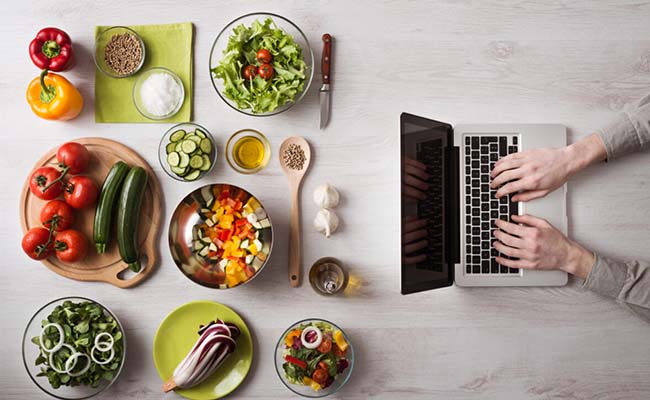How to Start a Food Blog: Step by Step
Eating is a basic human need. That’s the reason food blogging is one of the best niches to work on. There are so many different topics you could write about. You can do recipe videos, recipe reviews, educate on certain kitchen hacks, write about some specific cuisines. You could do a travel food blog and explore the world through food. For instance, you could write a blog about the best bakery in India. There is so much for you to do as a food blogger.

If you are passionate about it, this your guide on how to start a food blog step-by-step
Step 1: Choose a Food Blogging Niche:
Food blogging is a vast landscape.You need to find a niche that you want to blog about. If you have a blueprint in your head, very well. Go ahead with your idea and niche. If not, you can have a look at these food blogging ideas:
• Recipe blog
• Cookbook blog
• Healthy eating blog
• Cuisine specific
• Restaurant review
• Baking Blogs
• Eggless Recipes like eggless cakes online

Once you have decided on the niche, select the name of your blog. When deciding the name of your blog, choose a name that is related to your niche or reflects the idea behind it. Make sure it is original.
Step 2: Set Up Your Blog Online:
This step is technical. We will be helping you set up your blog website and how to go about it.
• Domain Name: Domain Name is the address people type in their browser. Your blog domain name should be easy to spell and unique. Usually, your blog name will become your domain name.

• Web Host: Web hosting is a service that allows you to post websites or web pages on the Internet. Find a web hosting provider that helps you with your account and blog Blogging Platform: The space to write, design, and publish your blog. We recommend you WordPress blogging platform. It is easy to use, offers a wide range of themes and plugins. You can go with free or paid versions.
Other than this, you can use Tumblr, Medium. Both free and paid versions are available. But, our advice would be a paid version because of higher control and ownership. If you want more flexibility and control over your blogging, WordPress is ideal.
Step 3: Design Your Website:
We will be educating you on how to create your WordPress food blogging account.
• Create a Theme: The advantage of using WordPress is free themes. You can browse for food or recipe themes. You can create your own theme or use premium themes. Premium themes are designed by experts. Premium themes are more appealing than free ones and give you a lot more functionality. The last option is to create your custom-designed WordPress theme.

• Install Recipe Plugins: You can install recipe plugins that allow you to easily enter the recipe of dishes or birthday cakes and help the reader read it in a friendly way. Similarly, there are other food plugins that you can install in your wordPress theme.
Step 4: Start Blogging:
Your WordPress is ready. You can start blogging. For blogging, you have to create content. Content should be engaging, SEO-friendly, plagiarism-free, and relate to the topic and niche. Create different pages like:

• About Page: Introduce yourself and your blog. Talk to the readers and tell them about what they can expect from this food blog, how it is different from others. Link out social media pages for them to stay connected with you.
• Contact Page: Provide contact information. You can create a contact form or forms for surveys.
• Reviews and Feedbacks: It’s important for a blogger to form engagements with the audience. By way of reviews and feedback, you can have an insight into their opinion. Their thoughts are of value to you
• Video Section: It’s a fact that videos are far more interesting than content. To give your readers a break from the content, have a video section. Create compelling food videos for them.
Step 5: Promote Your Blog:
Social Media is the king. It is one of the most active channels to promote your blog and grow your audience.
• Social Media: Invest in social media networking on Pinterest, Instagram, Facebook, and Twitter. It could be highly beneficial for your blog. Post nice content and pictures on your food blogging handle on social media.
• Search Engine: Get traffic to your food blog through Search Engine Optimization. Cover trending topics and write SEO-friendly content and come up in Google search results.
With this, we come to the end of how to become a food blogger. Hoping, this was informative and helpful for you.














